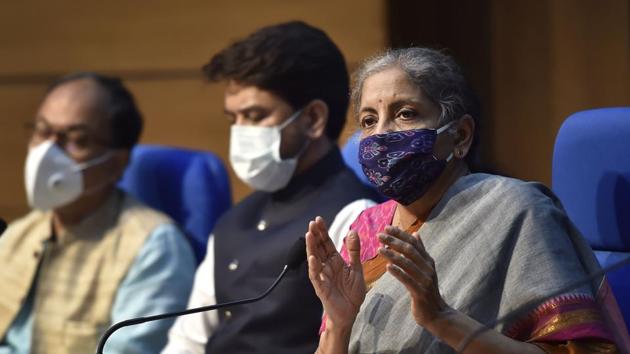State of the economy: The recovery question
The post-lockdown sequential recovery is flattening and inflation is gathering momentum. This raises questions on the recent optimism around economic recovery.
Latest data for two important economic indicators, the Consumer Price Index (CPI) and the Index of Industrial Production (IIP), released on Monday, show that the economy remains in a grim situation. The post-lockdown sequential recovery is flattening and inflation is gathering momentum. This raises questions on the recent optimism around economic recovery. It will also make it more difficult for the Reserve Bank of India (RBI) to boost the economy via the monetary policy route.

No V-shaped recovery in IIP
Factory output contracted in August by 8% compared to a year ago. While this is an improvement over the 10.8% contraction in July, the sequential recovery seems to be losing momentum. The August IIP number also belies the optimism generated by the Purchasing Managers’ Index (PMI) for manufacturing, which crossed the psychological threshold of 50 in August. A PMI value above 50 signifies expansion in economic activity. September PMI manufacturing jumped to an all-time high of 56. Still, the trend in factory output is more in keeping with the core-sector industry index which actually saw a wider contraction in August compared to July -- 8.5%, up from 8%. The recessionary grip is spread across the industrial sector, in terms of economic activities – mining, manufacturing and electricity – and use categories, primary goods, capital goods, intermediate goods, infrastructure goods and consumer goods. Even the consumer non-durable category, which showed positive growth in June and July has slipped in contraction again.

Also read | No consensus on GST; 21 states can start borrowing
Inflationary headwinds to recovery
RBI’s Monetary Policy Committee (MPC), last week, described the recent rise in inflation as a transitory phenomenon, which would ease with the unlocking of the economy. September’s inflation numbers suggest that this may not be the case. Headline inflation accelerated 7.34% in September, 0.65 percentage points more than what was projected by a Reuters poll of economists. Food inflation quickened 10.68%, driven by a 20.7% rise in vegetable prices. A sharp rise in food prices at a time when employment and wages are under a squeeze means that households will find it difficult to spend on non-food items, which will generate headwinds for aggregate demand. Core inflation, which measures non-food, non-fuel inflation, has been flat in the last few months, which suggests that the non-food economy might not be facing much of a supply-side problem.

Employment scenario continues to be bleak
Even as economic activity has been resuming with the removal of lockdown restrictions, employment generation and wage growth has not been commensurate. Experts have attributed this to social distancing requirements reducing the number of workers at workplaces and companies cutting wages to reduce costs. This is borne out by the latest Consumer Confidence Survey (CCS) of the RBI, which shows that 81.7% of the respondents believe that the employment scenario has worsened.
Also read: CPI inflation surges, factory output shrinks

The government needs to do more
Flattening sequential recovery, accelerating inflation and a weak labour market will continue to act as an impediment to sustained economic revival. Experts are beginning to question the efficacy of the measures which have been taken by the government to boost economic activity so far. “Capital goods and consumer durable goods have witnessed negative growth rates in double digits. If the FM’s measures were to work, these two segments should witness better growth in the coming months”, said a note by Madan Sabnavis, chief economist at CARE Ratings, referring to Monday’s demand-stimulus announcements by the finance minister. The government might also need to look at policies to boost consumption by the poor, who have a much higher marginal propensity to consume, rather than thinking about the relatively well-off, such as government employees, who were the target of expenditure boosting measures announced on Monday.
“Overall, the amount of demand stimulus is underwhelming, and we view the impact on both fiscal and growth as quite limited. With the previous rounds of budgetary fiscal support around 1% of GDP, today’s demand stimulus measures take total fiscal support (on budget) to about 1.2% of GDP, which is small compared with the size of the growth hit, and reflects India’s weak fiscal starting position,” said Sonal Varma at Nomura Global Markets Research.






